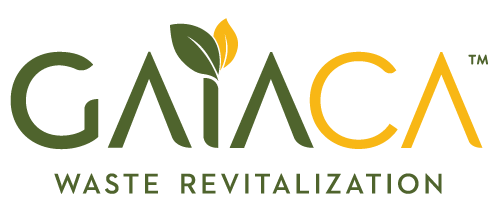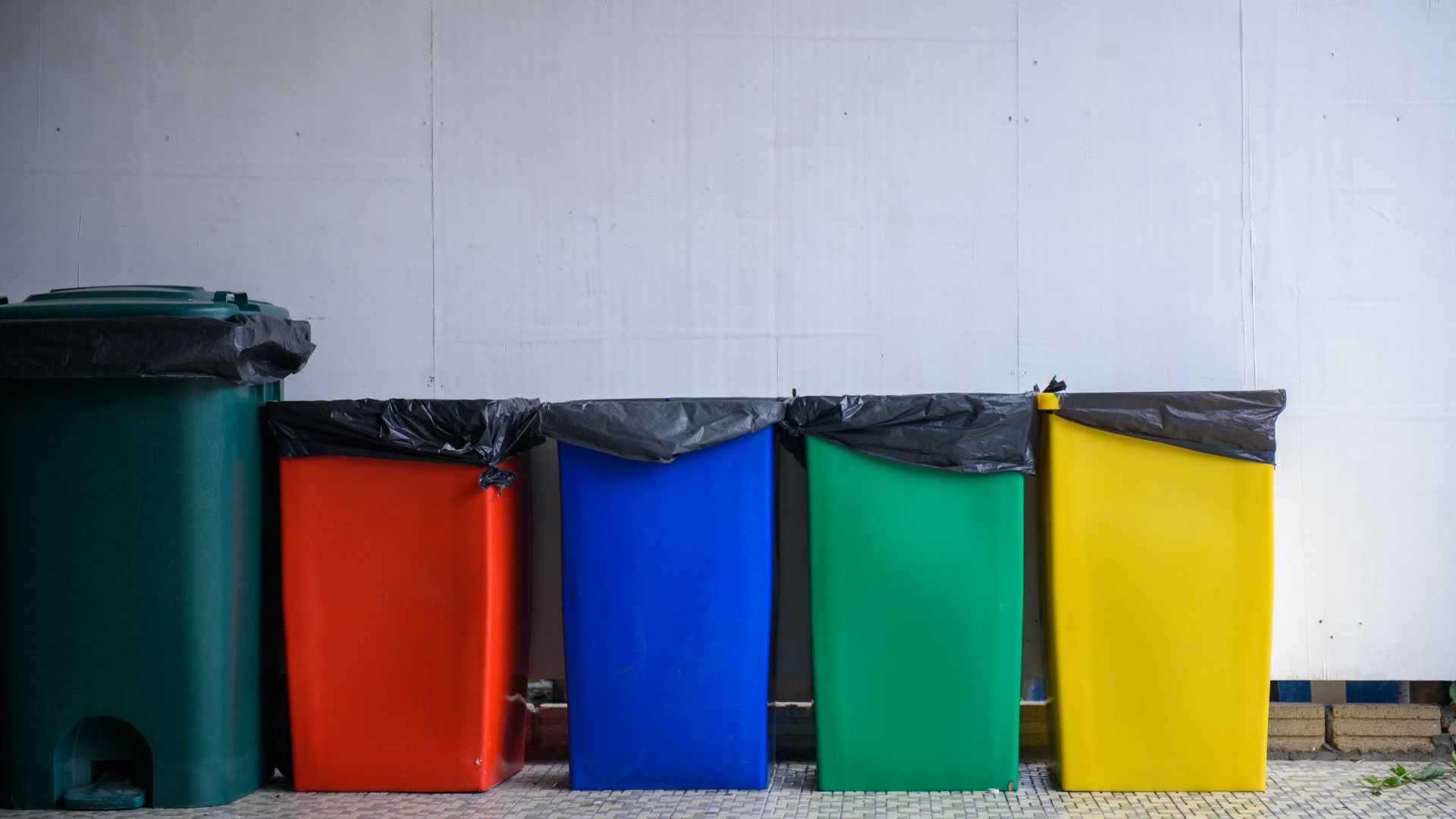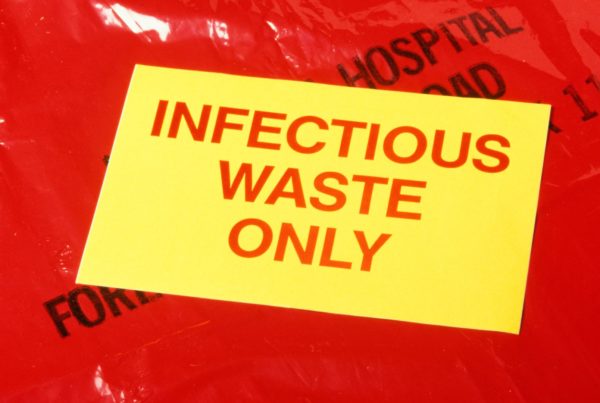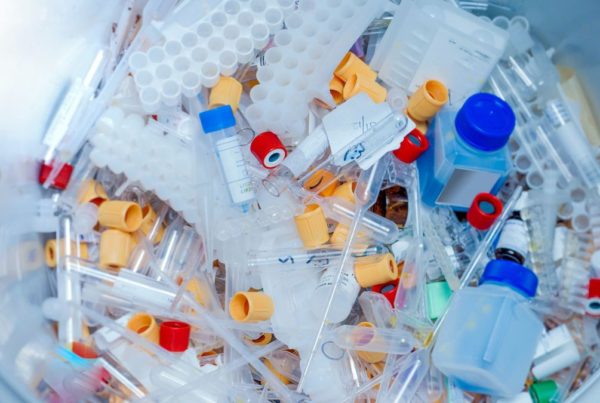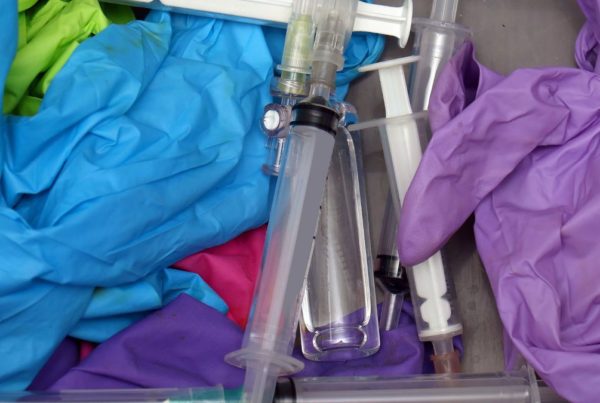Hospital waste falls into several different categories, and color-coding your waste bins and bags ensures that each waste type receives the correct handling and treatment. As different countries have different ways of categorizing and color-coding medical waste, it’s essential for healthcare managers in the United States to be familiar with the color codes established by the federal authorities.
Color Codes for Non-Regulated, Non-Hazardous Waste
Most hospital waste isn’t hazardous or regulated. In fact, internationally, around 54% of the waste generated in healthcare and medical facilities consists of paper and cardboard.
Adding general trash and benign recyclables to your biomedical waste bags inflates your disposal costs, so color-coded regular waste bins should be provided in every part of the hospital using the standard U.S. color codes:
- Gray – non-hazardous solid waste
- Examples: dust from sweeping, food packets, Kleenex, disposable diapers, hair, nail clippings, staples, used labels, sticky tape
- Blue – non-hazardous recyclables
- Examples: shredded paper, cardboard boxes, plastic water bottles, soda cans
- Green – organic waste
- Examples: fruit and vegetable peels, eggshells, garden clippings
Color Codes for Regulated Medical Waste
“Regulated medical waste” covers all of the waste types produced in healthcare facilities that pose a danger to human health and the environment—including a risk of infection or a risk of a physical cut or needlestick injury. Recycling medical waste (made from plastic, metal, and rubber) is often possible, as long as the material is sterilized first.
According to the Occupational Safety and Health Administration Bloodborne Pathogens Standard, bags, bins, refrigerators, and other containers that contain blood or potentially infectious materials should carry a fluorescent orange or red-orange label with a biohazard symbol. For the waste bags and bins themselves, most healthcare facilities use the following medical waste segregation system, which groups waste according to the method of treatment or disposal:
- Red (non-chlorinated bag with a biohazard symbol) – contaminated plastic and rubber waste that can be steam-sterilized and buried or recycled
- Examples: blood-draw syringes (without the needle), contaminated gloves, used IV tubes, and used catheter tubes
- Yellow (non-chlorinated bag with a biohazard symbol) – potentially infectious waste that needs to be incinerated
- Examples: pathological waste such as human or animal body tissues, body parts, and animal carcasses, blood bags, dressings, bandages, plaster casts and swabs contaminated with body fluids, contaminated hospital gowns ad bed-linen, waste from the rooms of patients with an infectious disease, laboratory cultures, infectious agents, live and attenuated vaccine waste, pharmaceutical waste including chemotherapy drugs, other cytotoxic and mutagenic drugs, and expired medicines
- Blue (blue-marked cardboard box with a biohazard symbol) – contaminated glass waste for sterilization and recycling
- Examples: laboratory slides, pipettes, and ampules
- White (translucent, puncture-proof container with a biohazard symbol) – metal sharps waste for sterilization and mechanical treatment
- Examples: used needles, lancets, scalpels, and needles used for suturing
- Black (bag with a biohazard symbol) – non-biological hospital waste which can be steam-sterilized and sent to landfills
- Examples: disposable masks, shoe covers, caps, gowns, and leftover hospital food
Color Codes for Hazardous Waste
Regulated medical waste that displays one of the four hazardous waste characteristics as defined by the Environmental Protection Agency—reactivity, ignitability, corrosivity, or toxicity—or that is regulated as radioactive or universal waste, needs color-coded labels for two reasons:
- To fulfill NFPA requirements
- To help medical waste disposal companies meet Department of Transportation (DOT) requirements for transporting hazardous waste
A note about color coding for hazardous waste: In some countries, black bins represent hazardous waste, yellow bins represent radioactive materials, and red bins represent biohazardous material (the waste categories outlined in the previous section).
In the United States, however, hazardous waste bins can be any color as long as they carry the correct labels. In hospitals and healthcare facilities, chemicals and heavy metals represent the main types of regulated hazardous waste.
NFPA Color Codes
The National Fire Protection Association (NFPA) uses color codes on the NFPA 704 diamond, which is required to be displayed on certain buildings, doors, and tanks. While not relevant for hospital waste bags per se, these diamonds can be used on hazardous waste tanks and containers in the hospital’s hazardous waste storage area to provide more information about the specific dangers of the contents.
The color codes are:
- Red – flammability
- Yellow – reactivity
- Blue – health hazard
- White – special hazard
Each quadrant in the diamond has a number as well as a color, which is helpful to understand when using NFPA 704 labels:
- 0 – minimal risk
- 1 – slight risk
- 2 – moderate risk
- 3 – serious risk
- 4 – severe risk
DOT Placard Color Codes
When transporting hazardous waste, the Department of Transportation (DOT) requires the use of diamond-shaped color-coded placards—at least 4″ x 4″ (100 mm) on each side, square-on-point. The colors used are based on the color-coding system developed by the American National Standards Institute (ANSI) to indicate the general level of risk. In addition to the relevant color, each placard must state the exact contents of the container or drum.
The colors for DOT hazardous waste placards are:
- Red – combustible materials
- Orange – explosives
- Yellow – oxidizers
- Green – nonflammable gas
- White – toxic or poison
- Red and white stripe – flammable solid
Hazardous Waste Color Codes Are Not Industry-Specific
Other industries that produce hazardous waste—including the cannabis industry—follow the same hazardous waste label requirements and color codes for NFPA diamonds and DOT placards. A hazardous cannabis waste management company is often hired to provide the correct hazardous waste drums and labels.
Color Codes for Other Types of Hospital Waste
Aside from infectious and hazardous waste, there are two other types of hospital waste that are often labeled using color codes. These include:
- Radioactive waste
- Universal waste
Radioactive Waste
The color coding for radioactive waste—such as radioactive materials used in diagnostics—is not standardized at the federal level. Common colors include purple with yellow, black with yellow, and brown (check your state or local color coding). The radioactive symbol should be used on all radioactive waste containers.
Universal Waste
Universal waste items (pesticides, aerosol cans, mercury-containing equipment, lamps, and batteries) should be labeled with a universal waste label. These labels are white with purple or magenta.
Don’t Wing It When It Comes to Waste Management
Thanks to the ongoing production of contaminated, potentially infectious, and various kinds of hazardous waste, hospital waste color coding—like waste color coding in other industries—can get complicated.
However, using colors and symbols to clearly identify what your bins represent ensures that everyone knows which waste product goes where—keeping staff members safe, making things simpler for your waste management company, and potentially reducing your waste management bill.
If you’re about to open a new medical facility or are working on improving your in-house healthcare waste management system, don’t guess—consult with someone who knows your local regulations in-depth and can help you get set up with a clear, consistent color-coding system for your hospital waste.
Not only will you protect the health and safety of your employees, but you’ll save money on inflated hazardous waste costs and avoid being landed with a fine.
